
Institut für Altertumswissenschaften
Seminar für Orientalische Archäologie und Kunstgeschichte
 | Martin-Luther-Universität Halle-Wittenberg Institut für Altertumswissenschaften Seminar für Orientalische Archäologie und Kunstgeschichte |
| |||||||||||||||||||||
| Tell Tawila (Northeastern Syria): Preliminary Report on the First Season, 2005 | ||
by Jörg Becker (translated together with David Tucker)
Seminar of Oriental Archaeology and Art History, Martin-Luther-University Halle - Wittenberg
Introduction
The first campaign of excavations at Tell Tawila, about 10 kilometres south of Tell Chuera, took place from September 3rd to October 15th 2005. This German-Syrian cooperation is part of the Tell Chuera Regional Project under the direction of Jan-Waalke Meyer (University of Frankfurt) to reconstruct for the Wadi al-Hamar region the cultural history from Neolithic to Early Islamic times. The excavations at Tell Tawila concentrate on the Halaf and Ubaid periods during the 6th to 5th millennium B.C. and were supported by the Gerda Henkel Stiftung (Düsseldorf).
The region of the Wadi al-Hamar is part of the northeastern steppe between Balikh and Khabur. This part lies about 350-420 meters above sea-level and is drained by the east-northeast west-southwest running Wadi al-Hamar, which discharges into the Balikh. From the north it is supplied by smaller wadis, which come from the steppes south of the eastern Taurus mountains in southeastern Turkey. In the south the region is bordered by the foothills of Tuwal al-'Aba (483 m above sea-level), which is followed to the east by the Jebel 'Abd el-'Aziz (920 m) and the Jebal Sinjar (1460 m) in northern Iraq.
Climatically this region is part of three zones: in a west-east direction it is on the border from the West Syrian to the northeastern steppe and from the south comes the influence of the desert. The annual rainfall reaches about 250 mm and allows rain-fed agriculture.
Of the approximately 100 sites, which represent the settlement development in the Wadi al-Hamar region through the ages, about fifteen sites belong to the Halaf and nine to the Ubaid cultures. Typically they are mostly small sites (< 1 ha), settled for a short time or just seasonal. Tell Tawila instead seems to be, together with Agila-South and Tell Chuera, a larger village of about 5 ha. These three sites have in terms of the collected ceramics a much longer settlement history.
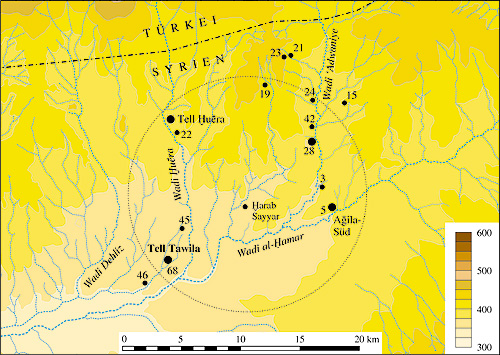
Fig. 1 Tell Tawila and other Halafian sites in the region of Wadi al-Hamar
The excavations at Tell Tawila give the possibility to study for the Wadi al-Hamar region as part of the homeland of the Halafians their development during most parts of the 6th millennium B.C. The 2005 excavations were conducted in two areas (Trenches A and B). Trench A is in the north, Trench B on the eastern slope of the flat tell with a maximum height of about 9 meters.
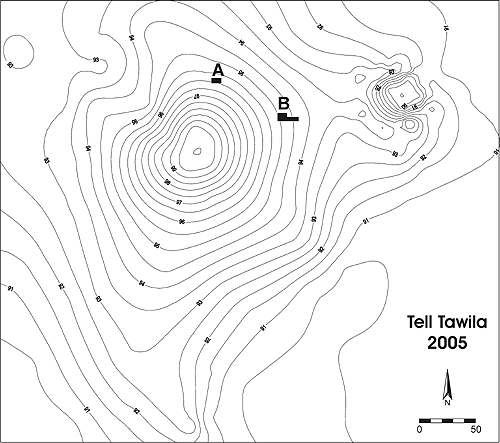
Fig. 2 Topographical plan of Tell Tawila
Trench A
In Trench A (Area T 8) four levels can be defined:
Level A 1
Level 1 represents mixed material directly under the surface and is composed of ceramics from early Islamic, early Iron Age, early Bronze Age and Halaf times without any trace of built structures.
Level A 2
At a depth of 40-50 cm a floor level with rectangular buildings was reached. Complete house plans were not preserved. The walls (15-35 cm in width) were standing just to a height of about 10 cm. Mudbricks were not recognized, but this could be due to the poor state of preservation.
With the exception of a cooking pot - maybe late chalcolithic in date - no further ceramics or small finds were found on this floor.
A small fireplace was found in the eastern part of the trench. In the western part and in front of an external wall of a house a pavement of small pebbles was exposed, sloping slightly down. Beside ceramics, animal bones, and fragments of stone tools a copper pin was found, which should belong to the late 4th millennium B.C.
Level A 3
Beneath the floor level of Layer A 2 the ceramic assemblage changed and must be dated to the Halaf period. Also Obsidian occured in large quantities.
In comparison with the small sherds of heavily fragmented ceramics from the surface, these Halaf sherds are again small in size. This leads to the hypothesis, that the Halaf levels – at least on this part of the site – must have been abandoned for an extended period of time.
In the western part some rectangular structures were recovered. The top of these walls lie about 30 cm below the floor level of Layer A 2. Through the poor state of preservation and the homogenous filling material without any ashy layers, the exact course of these walls was difficult to follow and no clear joints were visible. These walls are about 15-25 cm high and 35-40 cm wide, forming small rooms of about 2 sqm. In three neighbouring rooms a floor level was possibly reached. Beside a large quantity of Halaf ceramics from the filling, no sherds were found directly on the floor.
Level A 4
The excavations were continued to the east of area T 8. About 60-80 cm under the floor (Layer A 2) a soft ashy layer was found. Onto this ashy soil were set some installations like a small platform of pisé, a plastered door-socket and some concentrations of pebbles and ceramics, all Halaf in date. In the south section a pisé-wall was exposed (ca. 83 cm in width). Some further walls to the north were also found.
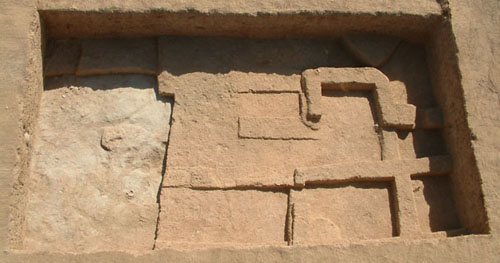
Fig. 3 Tell Tawila, Trench A, Halaf buildings
Trench B
In Trench B (Area Z 11 and A'11) an area of 4 x 18 metres was excavated. The surface material indicated that Halaf levels lay near the surface and not deeply buried under thick layers of later periods. In the upper layer (Level B 1) a mixture of early Islamic, early Iron Age, early Bronze Age and few fragments of Ubaid ceramics were found, together with a large quantity of Halaf sherds. With the exception of some pits and a kind of rectangular mudbrick construction filled with ashy soil, some poorly preserved stone concentrations of later periods could be uncovered, but the Halaf material increased with depth.
At the end of the first week Halaf buildings were reached just 30-40 cm under the surface. Until now at least three Halaf levels can be separated (Level B 2-4).
As is shown by a sonding (ca. 1 x 1.5 m) in area Z 11, the Halaf layers are at least 2.50 meters deep and show a close sequence of building levels for some centuries. For all building levels in Trench B it seems characteristic that older building levels were demolished and the rooms and outer areas filled with ashy soil. If the present state of excavations will allow the conclusion that, areas outside of existing houses were prefered for building new houses: New buildings were therefore standing beside the remains or ruins of older structures.
Level B 2
The latest level of the Halaf period is represented by a tholos (ca. 5 metres in diameter) with inner dividing walls, all made of pisé. The walls are ca. 35-50 cm in width. From east to west the tholos' interior is separated by two nearly parallel walls, forming a small corridor (ca. 60-100 cm wide). Between the northern wall and the outer wall a further north-south running wall divides two small rooms, so that all together four small rooms exist and the living space is just 9.6 sqm.
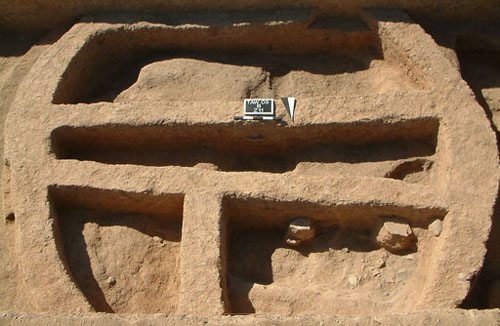
Fig. 4 Tell Tawila, Trench B, Halaf Tholos 1 (Level 2)
The floor level was reached in all rooms, but just in the northwestern room some ceramics were found on the floor itself. The other rooms seem to be clean and nearly free of finds. The small Room 1 has in its northern half a small plastered bench. The doorways between Rooms 1, 3 and 4 were not excavated during the 2005 campaign to keep this kind of preservation for the next season in spring 2006. In general these doorways are marked by larger sherds and also by the floor itself, which slopes down at these points. The smallest Room 2 seems to have no doorway; maybe it was a kind of storageroom and its walls were not originally built up to the roof. The entrance into the tholos has not yet been found, but must have been to the south (Room 4).
A rectangular room was added to the north of Tholos 1. The pisé walls here are resting on the same ashy soil as the tholos itself. This level represents the border of the Level B 2 buildings and the Level B 3 houses below.
Near the south section a poorly preserved installation was recognized which is interpreted - like a similar installation in the older Level B 3 - as a kind of small oven.
To the east – in Area A' 11 – some structures should belong to the building Level B 3, but can here be divided into four phases:
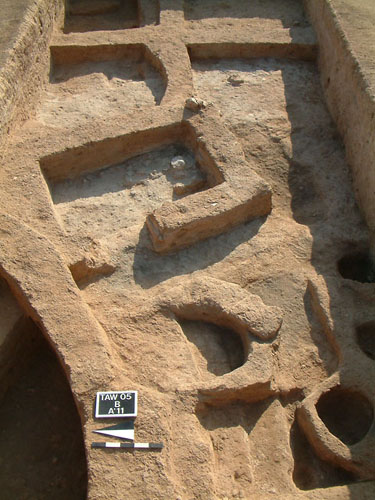
Fig. 5 Tell Tawila, Trench B, Halaf Levels 2a/b and 4
Level B 2b/c
Beside a layer of small pebbles in the southwestern corner of Area A' 11 three small ovens (tannur) were uncovered to the east with an inner diameter of ca. 30-40 cm. They are erected as single or double ovens, set into pisé structures. All these structures were built above Level B 3d/e. Further to the east some small rectangular rooms made of pisé and at the eastern end a kind of rectangular pisé-platform follow. Generally these walls also are resting on ashy layers. Below this level some walls of the older level became visible.
Level B 3d/e
Beneath the ovens of Level B 3b/c are steps (ca. 1.8-2.0 meters in width). On both sides, i.e. to the west and east, they are bordered by walls. To the north the uppermost step rests on top of the outer wall of Tholos 2. From here at least six steps lead to a level which lies ca. 60 cm deeper. On the lowest part of these steps the above mentioned ovens were built.
Level B 4
Because the buildings of Level B 2 are still standing, Level B 4 houses could only be excavated in the west and north of Area Z 11. To this Level B 4 belongs Tholos 3 with an outer diameter of ca. 5.20 meters, half of which is uncovered. Whereas the top of the eastern wall lies below the Level 2 building, the western part stands to a height of ca. 60-70 cm.
In the northern half of Tholos 3 a ca. 3.10 m wide plastered installation was found in front of the north section. Stratigraphically this installation lies under the western wall of the rectangular rooms of the upper Level B 2. A dark grey ashy layer directly above the installation shows that it may be a kind of large oven. The floor level of this house has not yet been reached.
To the south follows a straight wall for a length of ca. 4.30 m. This wall is ca. 60 cm in height and just 20 cm wide. On its eastern side there are two pilasters. In the space between each pilaster (ca. 1.10 in width) is a low bench. Between the northern pilaster and Tholos 3 a round oven platform of about 1 metres in diameter was found. Directly to the northwest, i.e. in the area between Tholos 3, the oven and the niched wall, a small wall connecting Tholos 3 and the niched wall was constructed and the space in between infilled with ashy soil.
A small plastered drainage outlet was found in the southern part of the niched wall. Near the south section a small low bench was uncovered.
Belonging to Level B 4 is also Tholos (2) with inner dividing walls (in Area A' 11). At the end of the 2005 excavation this building continued to the west in Area Z 11, so that an external diameter of about 6 metres can be assumed. In contrast to the other tholoi, the interior walls are made of long rectangular mudbricks, separated by ash fillded joints. In agreement with the later tholoi the outer wall is thicker (ca. 30-50 cm), the inner walls just 25 cm wide. The walls are now exposed to a height of ca. 80 cm, but under the soft ashy filling of the rooms the floor level has not yet been reached.
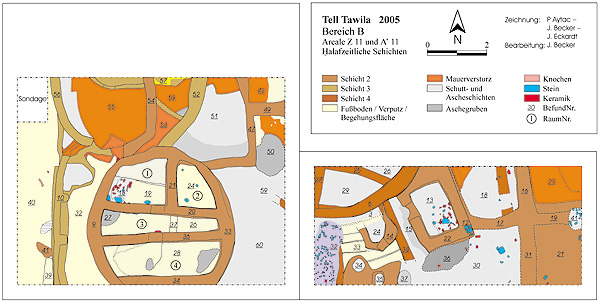
Fig. 6 Tell Tawila, Trench B, plan of the Halaf building levels 2-4
Small finds
A few small finds should be mentioned here: a fragment of a stamp seal made of chlorite or steatite, a tubular bead of baked clay, a sling projectile, and a macehead made of marble, which was found together with a large amount of obsidian in a small pit, and finally the spout of a vessel in the shape of a bull's head (bucranium).
Beside some flints the lithic material predominantly consists of obsidian. This fits very well into the well documented trade of such objects in the Halaf period. The obsidian sources can be assumed to be in the regions of eastern Turkey.
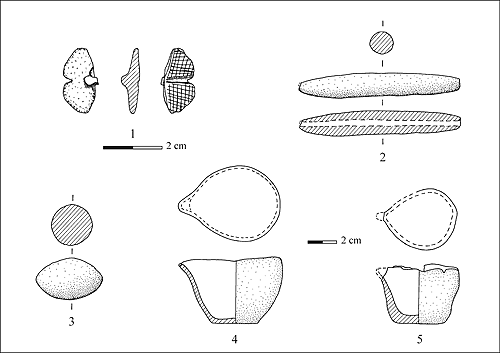
Fig. 7 Tell Tawila, selected small finds from Trench B
Ceramic, Date, and Subsistence
The excavations at Tell Tawila have brought to light a rich ceramic assemblage, which for Trench B consists of about 7,500 Halaf sherds. In view of the ceramics the excavated Halaf levels can be dated into the middle or rather into the late Halaf phase (ca. 5600-5300 B.C.).
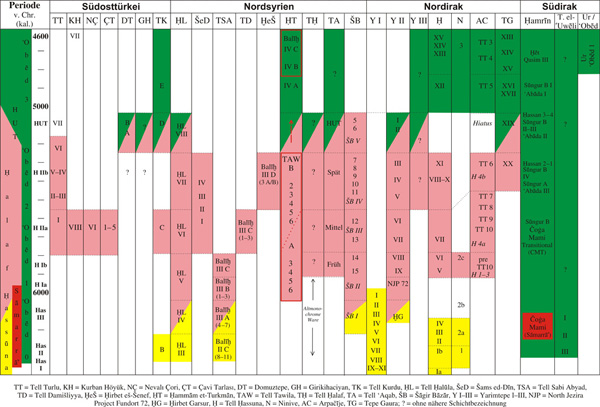
Fig. 8 Chronology of the Halaf period
As shown by the wealth of ceramics from the survey, Tell Tawila is naturally part of the homeland of the Halafians, evidenced in the large amount of Halaf fine wares(up to 85 %). The ceramic material can be divided into painted and unpainted wares. The painted ware dominates with ca. 80 %, but also some complete, unpainted vessels do occur.
In the painted ware everted rims for bowls and jars are characteristic, for example the cream bowls. Geometric designs are predominant, but bucrania are also well documented in lesser quantities and in some cases other animals like gazelle occur. Adjacent to the mostly monochrome paintings, also some polychrome pottery exists. In agreement with other excavated late Halaf sites, the design seems to be increasingly restricted to the upper part of the vessel. Otherwise the potter is now working more often with colour and this leads to polychrome pottery, as for example found in late Halaf Arpachiyah. As a basis for this polychrome pottery, the experience of working with the thickness of the paint colours and the firing atmosphere has lead increasingly to specialization and ultimately to the profession of the potter.
In the coarse tempered cooking ware (ca. 13 %) hole-mouth forms dominate. All other fabrics occur just in small quantities. To these fabrics belongs also the grey ware, a special fine ware which shows connections to the West Syrian area.
A local ceramic production is documented by some fragments of friable and deformed overfired pottery in the Halaf fine ware.
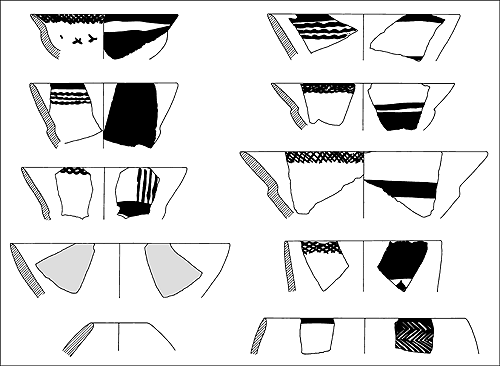
Fig. 9 Tell Tawila, Trench B, Halaf ceramics
The architecture finds good parallels in sites like Tell Sabi Abyad to the west, but particularly in late Halaf contexts of Yarimtepe III for the Sinjar region to the east in northern Iraq.
Through comparisons of architecture, ceramics and small finds far reaching connections with neighbouring regions and also to areas at a greater distances comes to light.
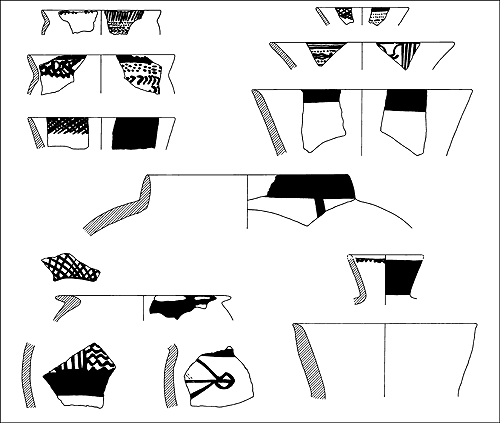
Fig. 10 Tell Tawila, trench B, Halaf ceramics
Informations on subsistence strategies are given as yet just for example by mortars or grinding stones, seen as utilities for preparing cereals. Botanical material occur in small quantities in the ashy layers, but have not been analysed at present.
The analysis of the animal bones will also be interesting, where for example the question arises whether the inhabitants of Tell Tawila kept herded animals (sheep/goat and cattle) or were specialised in hunting gazelle or onager.
These questions are of importance because the area of Tell Tawila lies on the border where rain-fed agriculture is just possible. Maybe a small climatic change led the people to look for a new home and brought the Halaf settlement to a close.
The excavation at Tell Tawila will continued in spring 2006.
| Spring campaign 2006 | |
| Further literature on the topics Halaf-'Obed | |
| Main page Near Eastern Archaeology (in German) |
| update: 2007-07-18 |
| ||||||